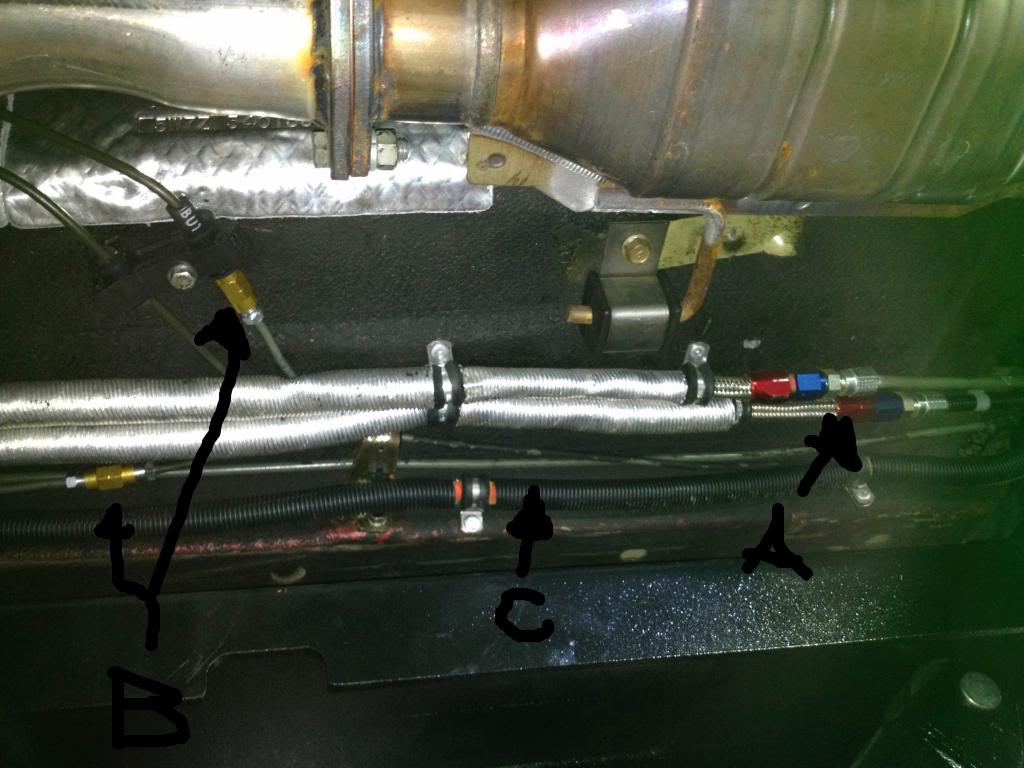Attaching battery harness
#1
Drivetrain is finally out. While unhooking all the little clips that hold the battery harness to the PPF, I couldn't locate any real handy spot to reattach the cables now that the PPF is off. You guys just using self tapping wire clips in the tunnel?
#2
I eliminated the puny Mazda cables & installed some that are much larger. JEGS Performance Products 10291 JEGS Remote Battery Cable Kit - Free Shipping on All Orders @ JEGS
#3
Thanks Tom. I'm considering going bigger cables, but will probably try to get away with these stock ones for now. How did you mount that kit? Along your fuel lines or in the tunnel?
#7
I have a couple thoughts about battery power cables, both a bit off the beaten path as usual.
First, I've attached a table that shows allowable length of wire run for various wire gauges that will maintain a 2% voltage drop on a 12 volt system. I figure a typical PM gear reduction starter will probably need 150 amps or more to get things initially spinning. Amp draw will vary, of course, depending on temperature, internal engine drag, dynamic compression ratio, etc., but I think 150 amps is a realistic estimate.
Based on that, it looks to me like a #1/0 (one-aught) cable would be the acceptable minimum. That's a bigger cable than you find in most "remote mount kits." I'm sure that has nothing to do with some marketing guy positioning an attractive price point while maintaining gross profit margin...
So, anybody ever consider buying some high temperature, #1/0 or #2/0 copper cable at an electrical supply house and making it up with the appropriate ends?
Second, envisioning a high CCA battery connected to that finger-size copper wire running under my car gives me visions of a car accident, leaking fuel tank, and a bared #2/0 cable sparking like a proper arc welder...gulp. Anybody ever think about putting a Ford style starter relay right by the battery so the main battery cable would only be powered while cranking?
A smaller gauge, fused-near-the-battery wire could then be used to supply power to everything else as well as transfer charging current from the alternator. I suppose the maximum battery charging amps would be the deciding factor for that secondary wire's size. Just a thought.
First, I've attached a table that shows allowable length of wire run for various wire gauges that will maintain a 2% voltage drop on a 12 volt system. I figure a typical PM gear reduction starter will probably need 150 amps or more to get things initially spinning. Amp draw will vary, of course, depending on temperature, internal engine drag, dynamic compression ratio, etc., but I think 150 amps is a realistic estimate.
Based on that, it looks to me like a #1/0 (one-aught) cable would be the acceptable minimum. That's a bigger cable than you find in most "remote mount kits." I'm sure that has nothing to do with some marketing guy positioning an attractive price point while maintaining gross profit margin...
So, anybody ever consider buying some high temperature, #1/0 or #2/0 copper cable at an electrical supply house and making it up with the appropriate ends?
Second, envisioning a high CCA battery connected to that finger-size copper wire running under my car gives me visions of a car accident, leaking fuel tank, and a bared #2/0 cable sparking like a proper arc welder...gulp. Anybody ever think about putting a Ford style starter relay right by the battery so the main battery cable would only be powered while cranking?
A smaller gauge, fused-near-the-battery wire could then be used to supply power to everything else as well as transfer charging current from the alternator. I suppose the maximum battery charging amps would be the deciding factor for that secondary wire's size. Just a thought.
Thread
Thread Starter
Forum
Replies
Last Post
qurtrn10
Ford V8 Discussion
13
02-10-2015 08:30 AM
sportage4x4
V8 Miata Wiring, Electrical, and ECUs
12
06-11-2010 09:50 AM
Currently Active Users Viewing This Thread: 1 (0 members and 1 guests)










